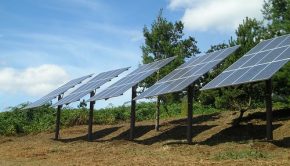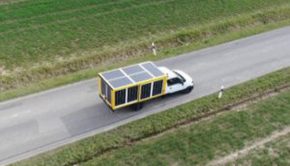Solar Energy –
Solar Energy –
<div class=”td-post-featured-image”>
<div class=”td-post-featured-image”><figure><a href=”https://dqbx58m08igv.cloudfront.net/wp-content/uploads/2021/02/AvangridSolarFarminOregon.jpg” data-caption=”The Wy’East Solar Project in Oregon. Credit: Avangrid Renewables”><img width=”750″ height=”563″ class=”entry-thumb td-modal-image” src=”https://dqbx58m08igv.cloudfront.net/wp-content/uploads/2021/02/AvangridSolarFarminOregon.jpg” srcset=”https://dqbx58m08igv.cloudfront.net/wp-content/uploads/2021/02/AvangridSolarFarminOregon.jpg 750w, https://dqbx58m08igv.cloudfront.net/wp-content/uploads/2021/02/AvangridSolarFarminOregon-300×225.jpg 300w, https://dqbx58m08igv.cloudfront.net/wp-content/uploads/2021/02/AvangridSolarFarminOregon-400×300.jpg 400w, https://dqbx58m08igv.cloudfront.net/wp-content/uploads/2021/02/AvangridSolarFarminOregon-266×200.jpg 266w, https://dqbx58m08igv.cloudfront.net/wp-content/uploads/2021/02/AvangridSolarFarminOregon-200×150.jpg 200w, https://dqbx58m08igv.cloudfront.net/wp-content/uploads/2021/02/AvangridSolarFarminOregon-100×75.jpg 100w, https://dqbx58m08igv.cloudfront.net/wp-content/uploads/2021/02/AvangridSolarFarminOregon-696×522.jpg 696w, https://dqbx58m08igv.cloudfront.net/wp-content/uploads/2021/02/AvangridSolarFarminOregon-80×60.jpg 80w” sizes=”(max-width: 750px) 100vw, 750px” alt title=”DCIM100MEDIADJI_0035.JPG”></a><figcaption class=”wp-caption-text”>The Wy’East Solar Project in Oregon. Credit: Avangrid Renewables</figcaption></figure></div> </div>
<!– Webcasts Content –>
<!– Content Part –>
<p>Portland General Electric today announced that Intel has joined PGE’s Green FutureSM Impact program. Intel’s participation enables PGE to enter into a 15- year agreement with Avangrid Renewables, a subsidiary of AVANGRID, Inc., to purchase the energy from a new 138-megawatt solar facility that will be developed in Wasco County, Oregon. Intel’s purchase is the single largest in PGE’s program; the company joins 17 other businesses and municipalities that have committed to purchase clean power through the Green Future Impact program, filling the program’s original 300-megawatt capacity, according to PGE.</p>
<p>Intel signed a 15-year agreement with PGE to enable the development of this additional new solar facility, which it is naming Daybreak Solar. It will produce a significant portion of the energy needed to power Intel’s advanced technology development and manufacturing facilities in Hillsboro, Oregon, said Intel.</p>
<p>Intel will be the only purchaser of power from this new facility and as part of the agreement, will also purchase and retire the associated renewable energy credits from Avangrid Renewables to improve the quality of its 100% renewable U.S. energy supply. Since 2004, Intel has been the largest purchaser of PGE’s Green Future Enterprise (formerly Clean Wind) product.</p>
<p>“Intel is excited to facilitate the construction of this new solar facility and provide our Oregon facilities with locally-based renewable energy,” said Marty Sedler, director of Global Utilities and Infrastructure for Intel Corp. “We are proud to extend our commitment to sustainability and to advancing Oregon’s economy.”</p>
<p>Avangrid Renewables will develop the 138-megawatt project in Wasco County, Oregon on 1,100 acres of privately owned land. During peak construction, it will create an estimated 150 to 200 jobs in partnership with local unions. When the facility begins operating in 2022, it will benefit the local economy for years to come by generating an estimated $30 million of taxes and property owner lease payments over the life of the project.</p>
<p>“We are pleased to again partner with PGE as we continue to meet the growing clean energy demand of forward-thinking commercial customers in the Pacific Northwest,” said Holly Carias, vice president of origination for Avangrid Renewables. “This project represents an important step forward in the region’s clean energy transition.”</p>
<p>PGE’s agreement with Avangrid Renewables marks the second local renewable energy project made possible by Green Future Impact customers. In 2020, PGE and Avangrid Renewables announced the development of a 162-megawatt solar facility – the largest in Oregon – to meet the needs of 17 Green Future Impact subscribers. That project is expected to come online in late 2021.</p>
<p>“PGE is excited to work with Intel to enable their ambitious sustainability and climate goals through our Green Future Impact program,” said PGE vice president and Chief Customer Officer John McFarland. “Partnerships like this strengthen Oregon’s economy and also help advance PGE’s goal to reduce the emissions associated with the power we serve to customers by at least 80% by 2030. We look forward to working with Intel and Avangrid Renewables for years to come.”</p>
<p>PGE has requested approval from the Oregon Public Utility Commission to add 200 megawatts of installed renewables to the program to meet customer demand. More information about participating in Green Future Impact is available at www.portlandgeneral.com/greenfutureimpact</p>
<!– Custom Content –>
<p><strong><a href=”https://blockads.fivefilters.org”></a></strong> <a href=”https://blockads.fivefilters.org/acceptable.html”>(Why?)</a></p>
<div class=”td-post-featured-image”>
<div class=”td-post-featured-image”><a href=”https://dqbx58m08igv.cloudfront.net/wp-content/uploads/2021/02/solar-modules-924333_640.jpg” data-caption><img width=”640″ height=”480″ class=”entry-thumb td-modal-image” src=”https://dqbx58m08igv.cloudfront.net/wp-content/uploads/2021/02/solar-modules-924333_640.jpg” srcset=”https://dqbx58m08igv.cloudfront.net/wp-content/uploads/2021/02/solar-modules-924333_640.jpg 640w, https://dqbx58m08igv.cloudfront.net/wp-content/uploads/2021/02/solar-modules-924333_640-300×225.jpg 300w, https://dqbx58m08igv.cloudfront.net/wp-content/uploads/2021/02/solar-modules-924333_640-400×300.jpg 400w, https://dqbx58m08igv.cloudfront.net/wp-content/uploads/2021/02/solar-modules-924333_640-267×200.jpg 267w, https://dqbx58m08igv.cloudfront.net/wp-content/uploads/2021/02/solar-modules-924333_640-200×150.jpg 200w, https://dqbx58m08igv.cloudfront.net/wp-content/uploads/2021/02/solar-modules-924333_640-100×75.jpg 100w, https://dqbx58m08igv.cloudfront.net/wp-content/uploads/2021/02/solar-modules-924333_640-150×113.jpg 150w, https://dqbx58m08igv.cloudfront.net/wp-content/uploads/2021/02/solar-modules-924333_640-560×420.jpg 560w, https://dqbx58m08igv.cloudfront.net/wp-content/uploads/2021/02/solar-modules-924333_640-80×60.jpg 80w, https://dqbx58m08igv.cloudfront.net/wp-content/uploads/2021/02/solar-modules-924333_640-265×198.jpg 265w” sizes=”(max-width: 640px) 100vw, 640px” alt=”Solar Panels” title=”Solar Panels”></a></div> </div>
<!– Webcasts Content –>
<!– Content Part –>
<p>Yesterday, a national coalition made up of more than 220 organizations launched the 30 Million Solar Homes campaign. The campaign’s goal is to add enough rooftop and community solar energy to power 30 million homes across the U.S. within the next five years. The coalition estimates the plan will create three million good-paying jobs, lower energy bills by at least $20 billion a year and cut total annual greenhouse gas emissions by 1.5%.</p>
<p>The coalition released a list of 15 federal policy recommendations to achieve the campaign’s 30 million solar homes goal, some of which include:</p>
<ul><li>Making solar tax incentives more equitable</li><li>Providing more reliable low-income energy assistance through solar energy</li><li>Supplementing low-income weatherization assistance with solar energy</li><li>Funding solar projects in marginalized communities</li></ul>
<p><a href=”https://www.30millionsolarhomes.org/wp-content/uploads/2021/02/30-Million-Solar-Homes-policy-proposals-1-29-21.pdf”>The complete list of policy recommendations can be found here.</a></p>
<p>Solar United Neighbors, the Institute for Local Self-Reliance (ISLR) and the Initiative for Energy Justice are leading the 30 Million Solar Homes campaign.</p>
<p>The centerpiece of 30 Million Solar Homes is to rapidly and massively scale programs that help low-income families benefit from solar. The federal government spends billions of dollars every year to help families pay their energy costs. Still, this only serves less than a fifth of the eligible population, according to a press release. Funding rooftop and community solar access for these households would provide long-term financial relief and reduce the need for annual energy bill assistance.</p>
<p>Increasing federal energy assistance funding and using funding that isn’t dedicated to direct bill assistance would ensure energy bill assistance is not reduced from current levels. This funding can be allocated through existing programs such as the Low-Income Home Energy Assistance Program (LIHEAP) and the Weatherization Assistance Program (WAP).</p>
<p>Over the coming months, the campaign will seek to educate lawmakers and the Biden-Harris Administration about the benefits of distributed solar energy.</p>
<p>“Cutting carbon emissions is vital and also not enough on its own,” said Subin DeVar, Initiative for Energy Justice Co-Founder. “We need to build an equitable energy system. This means giving individuals the power to control where their electricity comes from and to tap into the wealth, health, good jobs, and other benefits of a regenerative economy.”</p>
<p>“Communities that have faced the most harm from the utility-run energy system deserve to benefit from a new one,” said John Farrell, ISLR Co-Director, adding “30 Million Solar homes will let folks choose a better future; rural communities, urban communities, and communities of color.”</p>
<p>“The promise of distributed energy – the ability to produce solar power and store it at your home, business or in your community – is expansive. So are the benefits, which include electricity bill savings and installation jobs that cannot be exported,” said Suzanne Leta, head of policy and strategy at SunPower. “The Biden/Harris administration and Congress can take quick action that will turn this promise into a reality, spurring greater access to the benefits for customers and job seekers most in need.”</p>
<p>The more than 220 organizations in the coalition represent organizations focused on energy equity, climate, business, environmental, faith and public health. Some signers include Appalachian Voices, WE ACT for Environmental Justice, Southern Alliance for Clean Energy, and businesses including Sunrun, SunPower and Sunnova.</p>
<p>The complete list of signatories can be <a href=”https://protect-eu.mimecast.com/s/7M1ECyP4MIAkxNnCNIj-g/”>found here</a>.</p>
<!– Custom Content –>
<p><strong><a href=”https://blockads.fivefilters.org”></a></strong> <a href=”https://blockads.fivefilters.org/acceptable.html”>(Why?)</a></p>
<div class=”td-post-featured-image”>
<div class=”td-post-featured-image”><a href=”https://dqbx58m08igv.cloudfront.net/wp-content/uploads/2021/02/SmartCityLeadImage-1.png” data-caption><img width=”550″ height=”437″ class=”entry-thumb td-modal-image” src=”https://dqbx58m08igv.cloudfront.net/wp-content/uploads/2021/02/SmartCityLeadImage-1.png” srcset=”https://dqbx58m08igv.cloudfront.net/wp-content/uploads/2021/02/SmartCityLeadImage-1.png 550w, https://dqbx58m08igv.cloudfront.net/wp-content/uploads/2021/02/SmartCityLeadImage-1-300×238.png 300w, https://dqbx58m08igv.cloudfront.net/wp-content/uploads/2021/02/SmartCityLeadImage-1-252×200.png 252w, https://dqbx58m08igv.cloudfront.net/wp-content/uploads/2021/02/SmartCityLeadImage-1-200×159.png 200w, https://dqbx58m08igv.cloudfront.net/wp-content/uploads/2021/02/SmartCityLeadImage-1-100×79.png 100w, https://dqbx58m08igv.cloudfront.net/wp-content/uploads/2021/02/SmartCityLeadImage-1-150×119.png 150w, https://dqbx58m08igv.cloudfront.net/wp-content/uploads/2021/02/SmartCityLeadImage-1-529×420.png 529w” sizes=”(max-width: 550px) 100vw, 550px” alt title=”SmartCityLeadImage”></a></div> </div>
<!– Webcasts Content –>
<!– Content Part –>
<p><em>by Emma Davidson, Head of Strategy and Energy-as-a-Service at SSE Distributed Energy</em></p>
<p>The integration of power generators and users in the form of Virtual Power Plants (VPPs) is set to become an increasingly important part of the UK’s energy system. By pulling together the output of disparate power generating/using units such as small, decentralized power producers and on-site renewable sources such as wind and solar, VPPs are carving themselves a key role in bringing higher efficiency and more flexibility to the UK’s energy supply. And as we transition to a net-zero economy and the energy market reviews the generation mix that provides homes and businesses with electricity, cloud-based power plants could play a vital role in achieving the 2050 net-zero objectives. </p>
<p>VPPs enable connection with, and control of, assets to enable them to participate in energy trading and balancing markets. And by pooling power production, VPPs make it possible to enact quicker, aggregated responses to energy demand from a variety of assets. In this way, small, low carbon producers and large energy users both can be active participants in the energy system, harnessing assets to help balance demand and even generate additional revenue. </p>
<p>As the deployment of transmission and distribution connected renewable energy continues to pick up momentum, VPPs can provide a coordinated response across the system. This includes increasing stability at a national level and improving energy balancing at the regional level, thus alleviating grid constraints and promoting localisation of energy. </p>
<p><strong>Increasing stability of energy supply nationwide </strong></p>
<p>The intermittence of renewable energy sources alongside changes in demand are creating a volatile energy market. Moving away from large, steady power stations to a greater reliance on intermittent, renewable energy generation increases the possibility of system imbalance as a result of sudden and unpredicted changes in weather. This requires fast acting assets to be available to respond quickly to meet the system’s needs.</p>
<p>In response to this market opportunity, battery projects are springing up across the UK and their sole purpose is to participate in system balancing. However, we should not ignore the significant balancing resource that is already available to us in the form of flexible generation and load such as heating, ventilation and air conditioning (HVAC), backup power and combined heat and power technology (CHPs). Additionally, there will be a sizable flexible load from new technology that will become available to us over the coming years, with the growth in electric vehicles (EVs), vehicle-to-grid (V2G), and even hydrogen electrolysis.</p>
<p>Utilizing this demand in a way that maximizes flexibility to complement renewables requires a complex solution. It requires an understanding of each asset’s limitations, and its current commitments. If we take a chiller that uses a lot of electricity to create the cooling, it would be better if the cooling was scheduled to operate during the day when it is lovely and sunny in the South and/or incredibly windy in the North (as sometimes is the case!). This would allow greater electricity usage at the times when renewables are operating, while still ensuring the cooling requirements of the unit/system are met. </p>
<p>Specific assets may require more complex solutions. For example, with the growth in EVs, we are essentially deploying batteries across the UK that can absorb excess renewable generation and help balance the grid when required. However, the added complication comes from the driver’s schedule and charge expectations, which may vary from one day to the next. The driver’s needs remain the priority, therefore VPPs must take into account the potential of this uncertainty when making commitments to the system, ensuring that EVs support grid stability. </p>
<p>Across National Grid’s Future Energy Scenarios, V2G creates a huge swing in the gigawatts required to support EV charging at peak demand and will create a large amount of potential charge to help support grid stability as renewables rise, if utilised correctly. In short, if they are to make a meaningful contribution to local networks, electric vehicles will need to be charged and discharged at the right time. </p>
<p><strong>Balancing supply and demand at a local level</strong></p>
<p>Although we can expect to continue to need the ongoing support of large-scale renewables, there is a growing drive to accompany this with local energy generation, and local use of that power. This is at least in part fuelled by the need of businesses to reduce carbon output, as well as a growing interest in providing local areas with low-carbon energy. However, these producers are often constrained to smaller deployment sizes because either they have to be the off-taker themselves or they shoulder the burden of finding a long-term option to off-take the energy. This can be especially problematic for investment projects. </p>
<p>This is where a VPP has a role as a conduit between the end-customer (with either a supply or demand requirement), and the energy market, facilitated by suppliers, the DSO (Distribution System Operator) and the National Grid, to provide the balance required. </p>
<p>It may be that large energy users that wish to actively participate in the energy system can use their existing assets to help balance demand on the electricity grid while creating a new revenue stream. While this can be done currently, challenges remain in managing merchant risk. </p>
<p>In addition to the current markets, a new market mechanism is needed to facilitate agreements of peer-to-peer trading. The ability to include more than one source of off-taker for renewable generation could be an important facilitator in enabling more private organisations to deploy generation. Making it possible to apportion that energy across multiple customers would help reduce the risk associated with a number of these business cases and VPPs are well placed to help facilitate these types of transactions in the future. This could be seen as a new, more direct market for power producers/users, to the end customers that use that energy. </p>
<p>While it is likely certain parameters would have to be met (i.e. only if on a private network, or through a scheme created by a local authority) it would help encourage more local usage of energy allowing companies to support multiple local businesses by providing them with green energy. It would also enable greater certainty over origination of power, as customers would know where this power was generated from. The technicalities of this are complex and would require policy changes and potentially use of new technologies, such as block chain, however it would likely help support investments in renewable technology. </p>
<p>It is clear that there is a significant role for virtual power plants in the balancing of energy at the national and the local level, and that their impact on the pursuit of zero-carbon targets will be large. VPPs make it possible to synchronize demand and supply with maximum efficiency and flexibility, taking advantage of the balancing resources already widely available, as well as facilitating peer-to-peer trading that brings carbon reduction benefits to local production and use of power. </p>
<hr class=”wp-block-separator”>
<h4>About the Author</h4>
<div class=”wp-block-image”><figure class=”alignleft is-resized”><img loading=”lazy” src=”https://d1u9mglwzjxvkn.cloudfront.net/wp-content/uploads/2021/01/Emma-Davidson-SSE-1.png” alt class=”wp-image-87049″ width=”128″ height=”112″></figure></div>
<p><em>Emma Davidson head of Strategy and Energy-as-a-Service, SSE Distributed Energy</em></p>
<!– Custom Content –>
<p><strong><a href=”https://blockads.fivefilters.org”></a></strong> <a href=”https://blockads.fivefilters.org/acceptable.html”>(Why?)</a></p>









